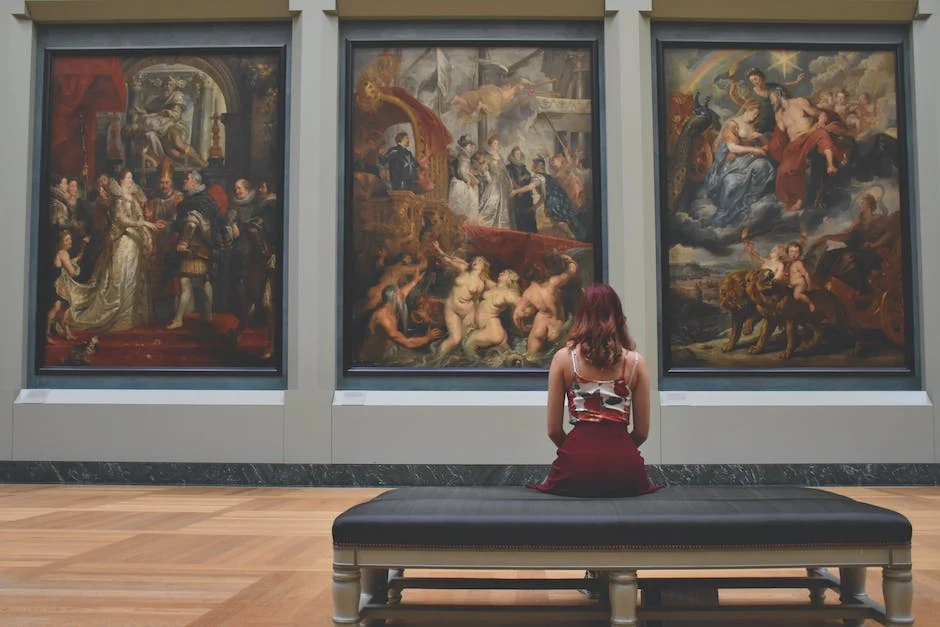Understanding virtual reality museums
Virtual reality museums use advanced technology to create immersive and interactive experiences for visitors. These virtual environments allow people to explore exhibits and artifacts from the comfort of their own home. By using special headsets, users can feel like they are walking through a museum, interacting with the displays and gaining a deeper understanding of history and culture. Some virtual reality museums even offer guided tours and educational experiences, making it a fascinating way to experience art and history in a new, innovative way.

Benefits of virtual reality in museum exhibits
Virtual reality in museums offers an immersive experience for visitors, allowing them to explore exhibits in a whole new way. VR technology can transport people to different times and places, providing a deeper understanding of historical events and artifacts. This interactive approach engages visitors and enhances their learning experience. Additionally, VR exhibits can attract a wider audience, including tech-savvy individuals who may not be as inclined to visit traditional museums.
Exploring virtual reality technology in museum settings
Virtual reality technology is revolutionizing the way we experience museums. It allows visitors to explore exhibits in a more immersive and interactive way. With virtual reality, museums can provide a unique and engaging experience, enhancing the understanding and appreciation of art and history. This technology also has the potential to make museums more accessible to people who are unable to visit in person, opening up new possibilities for education and cultural enrichment.
Enhancing the museum experience through virtual reality
Virtual reality (VR) technology is transforming the museum experience by offering immersive and interactive exhibits. VR allows visitors to explore historical artifacts and artworks in a 3D digital environment, providing a more engaging and educational experience. With VR, museums can create virtual replicas of inaccessible or fragile objects, offering a unique opportunity for preservation and accessibility. This technology also enables museums to experiment with innovative storytelling techniques, enhancing the overall visitor experience.
Challenges and limitations of virtual reality museums
Virtual reality museums have the potential to offer a unique and immersive experience, allowing visitors to engage with exhibits in a whole new way. However, there are some challenges and limitations to consider.
- Accessibility: Not everyone has access to virtual reality technology, which can limit the reach of virtual reality museums to a certain demographic.
- Motion Sickness: Some individuals may experience motion sickness or discomfort when using virtual reality headsets, which can detract from the overall experience.
- Maintenance: Virtual reality equipment requires regular maintenance and updates to ensure optimal functionality, adding to the overall cost and logistical considerations.
- Content Development: Creating high-quality and engaging virtual reality content for museums can be time-consuming and resource-intensive, requiring specialized skills and expertise.
While virtual reality museums offer exciting possibilities, these challenges and limitations need to be addressed to ensure a seamless and inclusive experience for all visitors.
Creating immersive virtual reality museum exhibits
Virtual reality (VR) technology allows museums to create immersive exhibits that transport visitors to different places and time periods. By using VR, museums can provide a more engaging and interactive experience for their visitors. VR exhibits can be created to showcase historical events, ancient civilizations, or even fictional worlds. This technology allows for a new level of storytelling and can bring to life exhibits that may no longer exist or are difficult to access in real life.
Future trends in virtual reality museum exhibits
The future of museum exhibits is leaning towards using virtual reality technology. This allows visitors to have an immersive and interactive experience that goes beyond the traditional museum display. Virtual reality exhibits are gaining popularity as they offer a more engaging and educational experience. This trend is expected to continue as technology evolves and becomes more accessible to museums and their visitors.
Cultural and educational impact of virtual reality in museums
Virtual reality offers an immersive learning experience, bringing history, art, and science to life. This technology allows visitors to explore exhibits in a whole new way, engaging their senses and providing a deeper understanding of the subject matter. This can lead to increased interest and appreciation in cultural and educational topics. Virtual reality museums also have the potential to reach a broader audience, including those who may not have the means to physically visit a museum. This inclusion fosters a more diverse and inclusive learning environment.
Implementing virtual reality in traditional museum settings
Virtual reality (VR) is being increasingly used in traditional museum settings to provide an immersive experience for visitors. Visitors can now explore exhibits in a more interactive and engaging manner through VR technology, allowing them to feel as if they are physically present in the exhibit. This implementation of VR in museums enhances the educational experience by providing a deeper understanding of the historical and cultural artifacts on display. Additionally, VR technology can attract a wider and younger audience to museums, making it a valuable tool for museums to stay relevant in the digital age.
Summary: The potential of virtual reality museums
Virtual reality (VR) museums offer an immersive experience, allowing visitors to explore exhibits from anywhere. This technology has the potential to make museums more accessible to a wider audience, including those who may not be able to visit in person. VR museums could also provide opportunities for more interactive and engaging exhibits, creating a new way to experience art and history. As this technology continues to evolve, the future of exhibits may be transformed by the innovative possibilities of VR museums.
